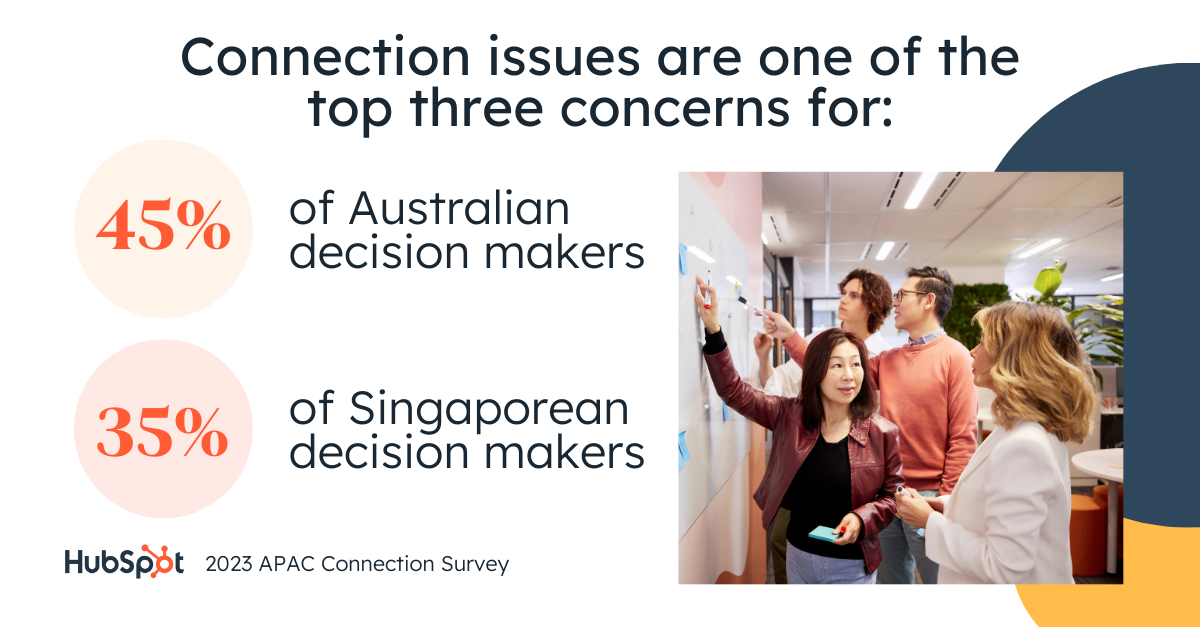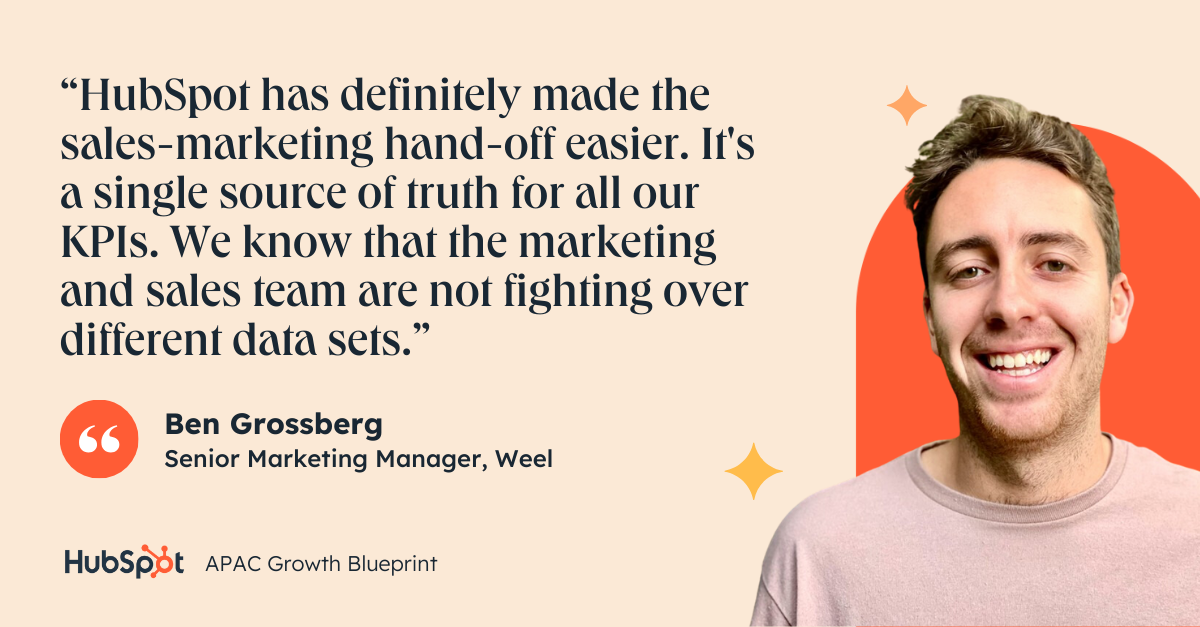The New Blueprint for Connecting with Customers
In both places, there’s a need to better balance technology and the power of human connection. Great tech can enable connection — but too much tech (that’s disconnected) ends up frustrating employees, wasting their time, and keeping them away from your community.
Blueprint for Building a Connected Customer Growth Strategy
1. Find a Single Source of Truth
With an average of 200+ apps per company, there’s no way they’re all speaking to each other correctly. Already-stressed teams are wasting valuable hours untangling data issues, cleaning and merging data, and porting information from one system to another — this is not sustainable.
42% of Singapore business leaders, and 33% in Australia, agree that having a connected CRM that’s actively used by all relevant teams is critical to improve customer connection.
At Australia-based company Weel, which offers virtual corporate cards and a spend management system to help businesses manage corporate spending, the company made changes to allow for better alignment between teams and improve reporting. Senior Marketing Manager Ben Grossberg explains, “HubSpot has definitely made the sales-marketing hand-off easier. It's a single source of truth for all our KPIs. We know that the marketing and sales team are not fighting over different data sets." They’ve built and implemented nurture workflows for all their buyer personas, allowing them to easily send relevant content to the right audience.  And at Singapore-based Volopay, an expense approval platform that helps teams manage corporate cards, bill payments, and expenses and automate accounting, the team also found a single source of truth — and got a +20% growth in sales close rate, a 40% time savings for sales management, and a 30% time savings for sales reps. “This extra bandwidth enables Volopay to do more without increasing its headcount. They have more capacity to understand and deepen relationships with customers, which is priceless for any start-up.”
And at Singapore-based Volopay, an expense approval platform that helps teams manage corporate cards, bill payments, and expenses and automate accounting, the team also found a single source of truth — and got a +20% growth in sales close rate, a 40% time savings for sales management, and a 30% time savings for sales reps. “This extra bandwidth enables Volopay to do more without increasing its headcount. They have more capacity to understand and deepen relationships with customers, which is priceless for any start-up.”
By implementing a single source of truth, teams can bring better context, research, data, and proof into their prospect outreach and customer interactions.
2. Prioritise Fewer, More Personalised Campaigns
The immense amount of noise generated by online advertising is impossible to ignore — and businesses need to realise when they’re contributing to it.
HubSpot CEO Yamini Rangan shared that “people are digitally drained. From our social feeds, to our inboxes, to our text messages, we are bombarded at every turn. Buyers aren’t engaging with companies like they used to, and you can see it in the data.”
Instead of posting everywhere and often, and emailing everyone everything, invest in audience research, laser in on segmentation and up-to-date targeting, and use the right channels for the right audiences. Less — when backed up by personalisation and targeting — is more.
3. Invest in Delighting Your Customers
Being obsessed with delighting your customers drives results. Since implementing HubSpot + MessageMedia, Vinomofo, one of the largest online retailers for Wine in Australia, was able to centralise their data, automate communications, and create a personalised, omnichannel experience that led to a 21% increase in sales conversion and a 50% improvement in customer re-engagement. They wanted to ensure they were always sending messages about white wine to white wine-lovers, and reaching potential customers at the right moments.
“We knew that HubSpot would provide us with a central source of truth and the ability to personalise and automate email communications. Integrating this with MessageMedia’s SMS platform gave us the power to provide a consistent experience to customers over the most important channels.”
Since great tech is doing the heavy lifting of keeping their data straight and automating their comms, the team is also able to delight their top customers with truly personal touches. Co-founder and CEO Justin Dry still hand-writes holiday cards for top-tier customers.
And speaking of top customers: keep in touch with the customers who take the time to provide constructive feedback and submit feature requests. Share product updates with them to show the company’s commitment to growth and improvement — and to tempt them to try more of your tools.
4. Make it Easier for Customers to Buy
In order to provide a best-in-class, truly connected customer experience, businesses need to meet consumers where they actually are — not just where they once were.
Here are a few ways companies can pivot to an updated buying experience:
- Get a little more hands-off. Create a self-serve sales flow that lets B2B customers get most of the way to purchase without speaking with a sales rep — or, let them self-serve completely and purchase like a B2C.
- Try new or previously uncharted channels, like WhatsApp or SMS.
- Let consumers buy directly through social media channels. For some industries, Instagram shopping and TikTok shopping (which is gaining traction in APAC) can be a huge revenue-driver, for example. 25% of marketers report that their brands are already selling products directly on social media.
Grow Your Business With The APAC Growth Blueprint
Dig deeper into the data from the research and discover how to grow in APAC with the factsheets and infographics on connecting and reaching your customers.